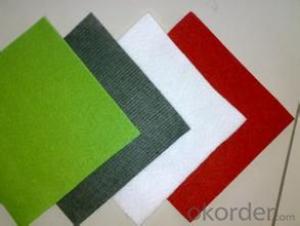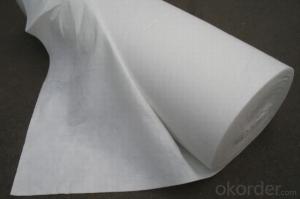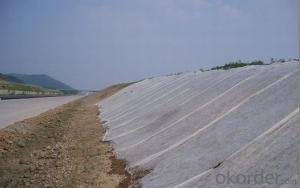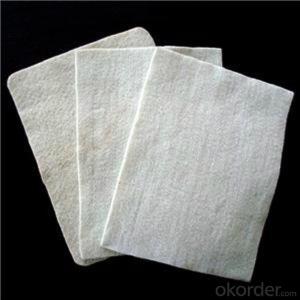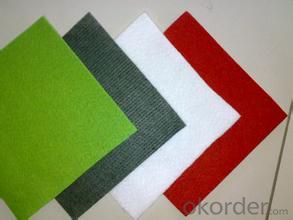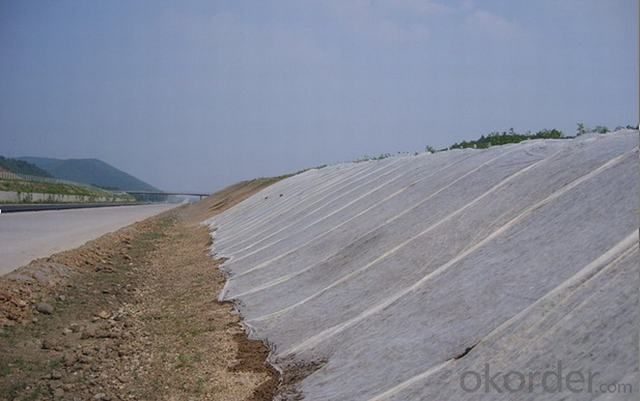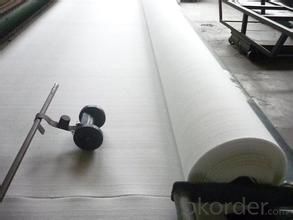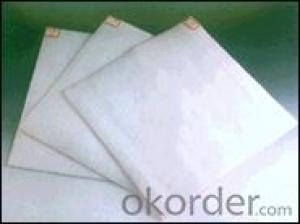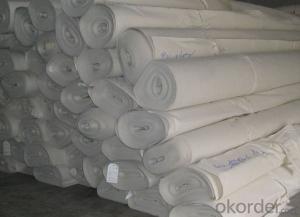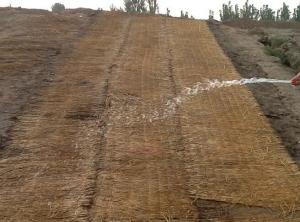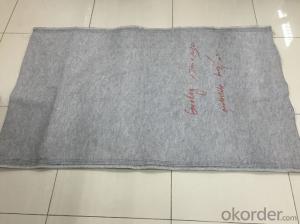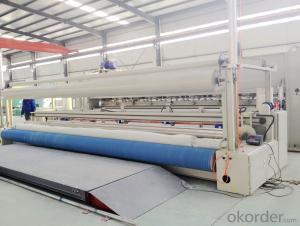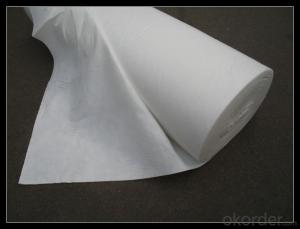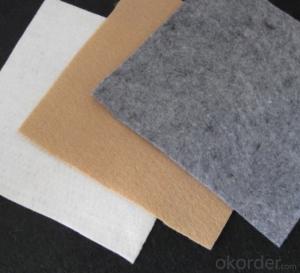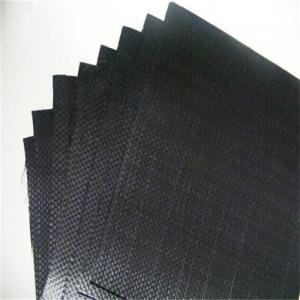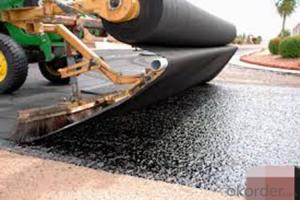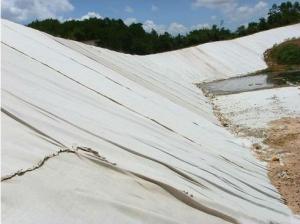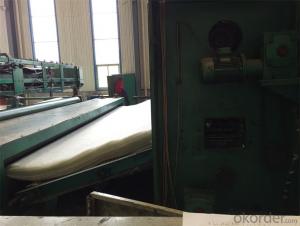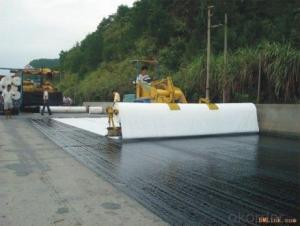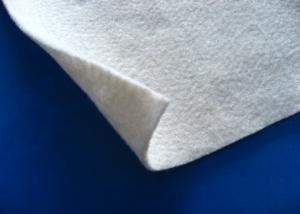Black Geotextile Fabric for Railway Construction as Geosynthetics
- Loading Port:
- Qingdao
- Payment Terms:
- TT OR LC
- Min Order Qty:
- 20000 m²
- Supply Capability:
- 1500000 m²/month
OKorder Service Pledge
OKorder Financial Service
You Might Also Like
Specifications of Geotextile as one type of Geosynthetics
1) Weight / Mass: 100g/m2-1500g/m2
2) Width: Within 8 m (1m-8m)
3) Length: 50m-100m/roll (as request)
4) Material: PP / PET
5) Color: Black , white , grey and other color
6) Certificate: CE/ISO9001 , ISO14001
7) Manufacturing method: nonwoven / woven
8) The Biggest geotextile manufacturer/factory in China for many years
PET continuous filament spunbond needle punched nonwoven geotextile(representative average data.) | |||||||||
Test Item/Unit/No. | HY100 | HY150 | HY200 | HY250 | HY300 | Test Method | |||
Mechanical Properties | |||||||||
Tensile Strength | CD | kn/m | 4.8 | 8.3 | 10.9 | 14.5 | 18 | ASTM D 4595 | |
MD | 7 | 12 | 14 | 18 | 22 | ||||
Elongation at maximum load | CD | % | 65 | 64 | 63 | 62 | 61 | ||
MD | 64 | 63 | 62 | 61 | 60 | ||||
Grab Strength | CD | kn ≥ | 0.36 | 0.58 | 0.87 | 1.08 | 1.35 | ASTM D 4632 | |
MD | 0.42 | 0.78 | 1.07 | 1.33 | 1.6 | ||||
Grab Elongation | CD | % | 55 | 55 | 59 | 59 | 60 | ||
MD | 50 | 50 | 51 | 51 | 53 | ||||
Trapezoidal Tear | CD | kn ≥ | 0.16 | 0.23 | 0.31 | 0.39 | 0.46 | ASTM D 4533 | |
MD | 0.245 | 0.31 | 0.42 | 0.46 | 0.55 | ||||
Burst Strength-CBR plunger method | kn ≥ | 0.85 | 1.47 | 2.3 | 2.8 | 3.3 | ASTM D 6241 | ||
Puncture resistance | n ≥ | 220 | 320 | 430 | 540 | 650 | ASTM D 4833 | ||
Mullen Burst | Mpa | 1.2 | 1.8 | 2.3 | 2.8 | 3.3 | ASTM D 3786 | ||
Cone drop resistance(hole-Φ)Dynamic perforation diameter | mm | 34 | 30 | 26 | 22 | 19 | BS EN 918-1996 | ||
Hydraulic Properties | |||||||||
Flow Rate,Q100 | L/s/m² | 200 | 210 | 180 | 150 | 140 | ASTM D 4491 | ||
Permeability | cm/s | 0.48 | 0.43 | 0.39 | 0.36 | 0.34 | |||
Apparent Opening Size O95 | mm ≤ | 0.13 | 0.12 | 0.12 | 0.11 | 0.11 | ASTM D 4751 | ||
Apparent Opening Size O90 | mm ≤ | 0.12 | 0.11 | 0.11 | 0.1 | 0.1 | |||
Physical Identification Properties | |||||||||
Thickness 2KPa | mm | 1.1 | 1.3 | 1.8 | 2.5 | 2.9 | ASTM D 5199 | ||
Mass per unit area | g/m² | 100 | 150 | 200 | 250 | 300 | ASTM D 5261 | ||
Width | m | 2/3/6/ | 2/3/6/ | 2/3/6/ | 2/3/6/ | 2/3/6/ | |||
FAQ:
What is the main application of Needle Punched Nonwoven Geotextile for Coast Engineering?
The main application of our Needle Punched Nonwoven Geotextile for Coast Engineering is as follows: The highway, railway, soil-stone dam, breakwater, airport, backfill soil of retaining wall, slope protection, etc.
Where is your main market?
Our main market is in Middle East, South America and some African countries.
What is your advantages for L Needle Punched Nonwoven Geotextile for Coast Engineering?
One of the largest manufacturer of Needle Punched Nonwoven Geotextile for Coast Engineering with advanced equipment, big production capacity and excellent quality.
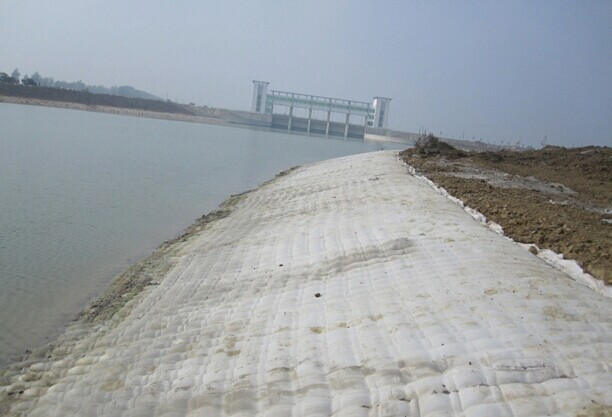
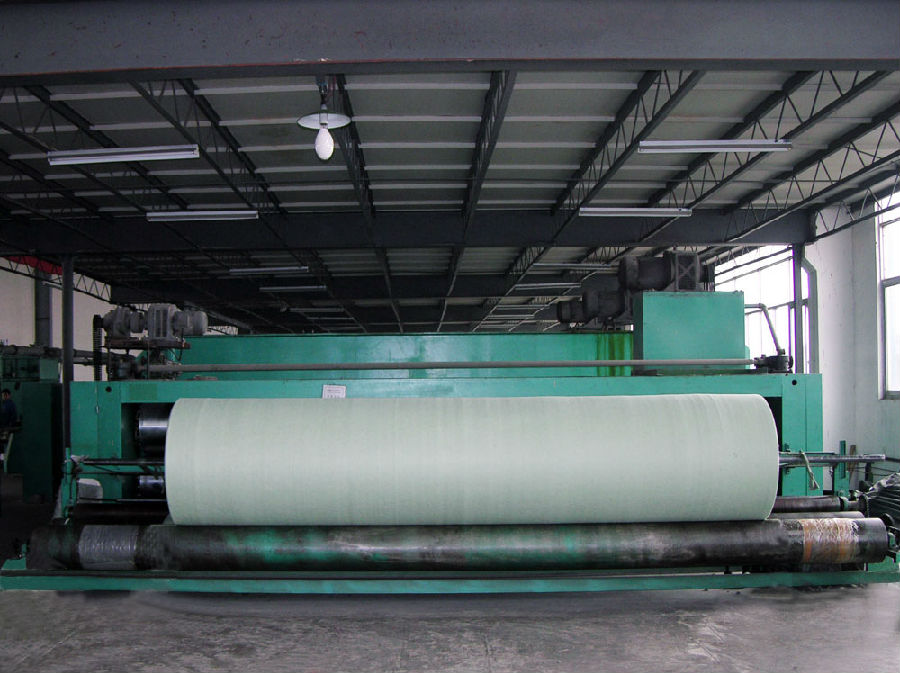
- Q: Artificial lake can not do geotextile waterproofing? What method can not do geotextile waterproof?
- Artificial lake with geotextiles do waterproof? Artificial lake to the bottom of the water leakage. The lake design in the use of geotextile, it is not anti-seepage, it should be used for filtering. There is no use of course there will be different results. If the design has that use. If the lake is to prevent water leakage, there are many ways. 1. Laying a professional anti-seepage geomembrane, composite geomembrane; 2. Laying a layer of sticky heavier little permeability of the clay, pressure solid. 3. There are also laying a layer of geology known as GCL geosynthetics, full name is bentonite waterproof blanket. Geotextile is water seepage, the general is not anti-seepage, can be used to filter. Only in the geotextile composite anti-seepage film to prevent seepage, and composite film after the geotextile has not called geotextile, and should be called composite geomembrane. But because of habitual problems, and now there are people called the seepage geotextile.
- Q: How do geotextiles help with erosion control in slope protection projects?
- Geotextiles are used in erosion control for slope protection projects by providing a barrier that stabilizes the soil, reduces water flow, and prevents sediment migration. They effectively control erosion by increasing soil cohesion, improving drainage, and enhancing vegetation growth, thereby preventing slope failure and minimizing the risk of erosion.
- Q: How do geotextiles help in preventing soil erosion on slopes?
- Geotextiles act as a barrier between soil and water, allowing for better drainage and filtration. They stabilize the soil, prevent particle movement, and reduce surface erosion by increasing the overall shear strength of the slope.
- Q: How do geotextiles help in preventing weed growth?
- Geotextiles help prevent weed growth by acting as a physical barrier that blocks sunlight, preventing weed seeds from germinating and growing. Additionally, they create an unfavorable environment for weeds by reducing moisture and nutrient availability, ultimately inhibiting their growth.
- Q: How are geotextiles recycled?
- Geotextiles can be recycled through a process called mechanical recycling. This involves collecting used geotextiles, cleaning them, and breaking them down into smaller fibers or pellets. These recycled materials can then be used to manufacture new geotextiles or other products, reducing the need for raw materials and minimizing waste.
- Q: What is the geotextile material?
- Geotextile is made of staple fiber polyester, polypropylene, polyester filament, PP flat silk and other synthetic fibers through acupuncture or weaving made of geotextile, non-woven and industrial non-woven products in one. The general width of 1-6 meters, roll length of 50-100 meters, the quality per unit area of 100-600 grams square meters. According to the different production processes are: polyester / polypropylene staple acupuncture geotextile, PP flat wire woven geotextile, polyester spunbond filament geotextile, single double-sided thermal composite impermeable geotextile, woven geotextile and so on.
- Q: Construction of composite geotextile
- Geotextile as a protective layer of geomembrane, so that the protection of impermeable layer from damage. In order to reduce the UV radiation, increase the anti-aging properties, it is best to use the laying method. Construction, the first use of smaller diameter sand or clay to find the base surface, and then laying geomembrane. Geomembrane should not be stretched too tight, buried at both ends of the soil part of the corrugated, and finally in the shop on the geomembrane with a fine sand or clay shop layer of 10cm or so excessive layer. Puzzle 20-30cm stone (or concrete prefabricated block) for the anti-Chong protective layer. Construction, should try to avoid the stones directly hit the geomembrane, the best side of the film side of the protective layer of the construction. Composite geomembrane and the surrounding structure should be connected with expansion bolts and steel plate pressure bar anchorage, the connection site to brush the emulsion asphalt (2mm thick) bonding, to prevent the occurrence of leakage.
- Q: Geotextile pp-65-4-600 what it means
- PP plastic raw materials, chemical name: polypropylene, that is, polypropylene geotextile, a square meter of 600 grams of weight. Henkel Building Materials
- Q: How do geotextiles improve the performance of embankments?
- Geotextiles improve the performance of embankments by providing reinforcement, filtration, and separation. They prevent the intermixing of different soil layers by acting as a barrier, thus enhancing the stability and reducing the settlement of the embankment. Additionally, geotextiles allow for the efficient drainage of water, preventing the buildup of excess pore pressure that could potentially lead to embankment failure.
- Q: What are the maintenance requirements for geotextiles?
- Geotextiles generally have low maintenance requirements. However, regular inspection and cleaning are important to ensure their optimal performance. The specific maintenance needs may vary depending on the type and application of the geotextile, but in general, it is recommended to remove any debris, sediment, or vegetation that may accumulate on the surface. Additionally, periodic checks for any signs of damage or wear, such as tears or fraying, should be conducted and repairs or replacements should be made as necessary.
Send your message to us
Black Geotextile Fabric for Railway Construction as Geosynthetics
- Loading Port:
- Qingdao
- Payment Terms:
- TT OR LC
- Min Order Qty:
- 20000 m²
- Supply Capability:
- 1500000 m²/month
OKorder Service Pledge
OKorder Financial Service
Similar products
Hot products
Hot Searches
Related keywords
